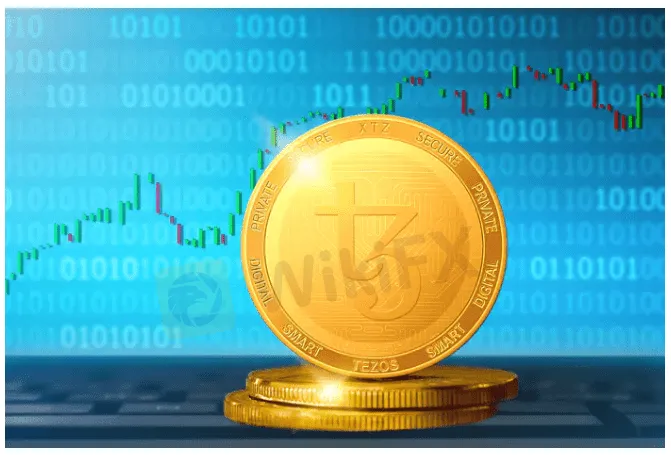简体中文
繁體中文
English
Pусский
日本語
ภาษาไทย
Tiếng Việt
Bahasa Indonesia
Español
हिन्दी
Filippiiniläinen
Français
Deutsch
Português
Türkçe
한국어
العربية
Tezos‘s Tenderbake Upgrade Goes Live, Here’s How XTZ can React
Abstract:Tezos, a proof-of-stake blockchain, has changed its consensus algorithm to lower block times and improve performance.

Key Insights:
Tezos has deployed a major upgrade, changing its consensus algorithm.
The upgrade could facilitate lower block times, produce faster transactions, and smoother-running applications.
Despite the ecosystem-centric updates, XTZ is down 55.37% from its ATH.
Tezos – a decentralized open-source blockchain, recently activated a significant upgrade, changing its consensus algorithm in its ninth upgrade.
Improved Performance
Tezos is a proof-of-stake blockchain that can execute peer-to-peer transactions and serve as a platform for deploying smart contracts. A recent press release revealed that the upgrade is code-named Ithaca 2 and replaces the current consensus algorithm, known as Emmy, with Tenderbake.
The new upgrade is set to enable lower block times, producing faster transactions and smoother-running applications. As part of Ithaca 2, the Tezos blockchain prepares for scalability efforts, including rollups for WebAssembly and Ethereum Virtual Machine (EVM) compatibility and pre-checking, an efficiency-enhancing validation scheme.
The Ithaca 2 upgrade also aims to reduce the requirement to become a network validator by 25% from 8,000 tez (the Tezos digital token) to 6,000 tez, making the networks decentralization stronger.
Most importantly, the new Tenderbake consensus algorithm enables lower block times, resulting in faster transactions and smoother-running dAapps on Tezos.
Tezos‘s Growth and XTZ’s Rise
Tezoss growth over the last year has been up to the mark with growth both in terms of user activity and the price rise of its native token XTZ. Data suggests that smart contract calls increased per month from 100,000 in January 2021 to over 6.2 million in January 2022.
Furthermore, Tezos saw key market integrations with brands such as Red Bull Racing, Manchester United, The Gap, and Kia. Notably, Tezoss price saw no significant uptick at the time of writing despite the positive market momentum and ecosystem-centric upgrades.
Tezos traded at $3.78, noting 0.92% daily and 7.25% weekly gains. XTZs relative strength index on a one-day chart was oscillating in the oversold zone, signifying higher buying pressure in the market. Still, there was no significant price implication of the same.

With BTC and the larger market‘s momentum looking rangebound at press time, XTZ could witness some short-term pullback. Nonetheless, with the network developing XTZ’s price in the long term could see a decent push.

Disclaimer:
The views in this article only represent the author's personal views, and do not constitute investment advice on this platform. This platform does not guarantee the accuracy, completeness and timeliness of the information in the article, and will not be liable for any loss caused by the use of or reliance on the information in the article.
Read more

Chinese Fugitives Arrested in Philippines POGO Scam Raid
Thirteen Chinese fugitives linked to POGO scams arrested in Pasay, Philippines. PAOCC reveals their crimes, raising concerns over illegal entry despite the ban.

Canada to Enforce Retaliatory Tariffs if U.S. Duties Persist
Canada is striking back! If U.S. tariffs persist, Canada will impose retaliatory duties, escalating tensions in North American trade.

Unbelievable! Is the Yen Really Gaining Strength?
Recently, the yen exchange rate has once again broken through the 150 yen per U.S. dollar mark, sparking heated discussions about its appreciation.

Watch Out! Inflation Control is Key!
Recently, the stability of the Naira exchange rate has become a key focus in the market. The Central Bank of Nigeria (CBN) has implemented a series of monetary policy interventions, reducing the exchange rate gap between the official market and the parallel market to below 1%.
WikiFX Broker
Latest News
How Do You Make Money in the Forex Market in March 2025
Europe’s High-Stakes Gamble: Can It Bridge the U.S.-Ukraine Divide?
Crypto Trading: New Trend among Indian Youth
Botbro Creator, Lavish Chaudhary Unveils New Project
Is TUOTENDA a cryptocurrency scam primarily targeting men over the age of 50?
Canada to Enforce Retaliatory Tariffs if U.S. Duties Persist
Unbelievable! Is the Yen Really Gaining Strength?
Malaysia’s EPF Declares Highest Dividend Since 2017 Amid Market Resilience
First UK Criminal Conviction for Unregistered Crypto ATMs Involves Over £2.5 Million
Consob Exercises MICAR Authority for the First Time, Shutting Down Unregistered Crypto Website
Currency Calculator






